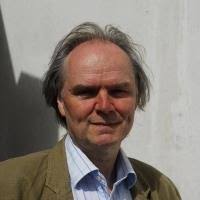
Magnus S Magnusson
University of Iceland, Iceland
Title: T-patterns and self-similarity from protein to the cell to human mass-societies
Biography
Biography: Magnus S Magnusson
Abstract
Beginning in the early 1970’s, this longstanding primarily ethological (i.e., biology of behavior) project concerning social interaction and organization in social insects and primates including humans, was initially inspired mainly by the work of N. Tinbergen, who with K. Lorenz and von Frisch shared the Nobel Prize in Medicine or Physiology in 1973 for “for their discoveries concerning organization and elicitation of individual and social behavior patterns". Lorenz’ Nobel lecture was entitled “Analogy as a source of knowledge”. The smallest creatures they studied were social insects and there was no mentioning of self-similarity or any nanoscale actors nor of Cell Societies (better-named protein societies) where behavioral and organizational analogies now appear across more than 10 orders of magnitude in size and billions of years of evolution from the RNA world to protein societies (Cell Cities) to the very recent human mass-societies. The present project has focused on behavioral real-time pattern definitions and their validation through corresponding detection algorithms and software THEMETM (see hbl.hi.is and patternvision.com) and has resulted in the self-similar fractal-like T-pattern recurring with statistically significant translational symmetry. Detection in animal and human interactions and later in brain cell interactions has followed showing T-patterned self-similarity of interaction between and within brains (Magnusson et al., 2016; Casarrubea, 2015) as well as in DNA. Moreover, T-pattern based self-similarity appears in social behavior and organization from “Cell City” (protein cities) to the only large-brain mass-societies appearing in a biological eye-blink; those of modern humans. Absent from the mass-societies of insects (hives) and cells (animal bodies), long T-patterned strings external to and more durable than the citizens, are essential in protein and human mass-societies. That is, strings of molecules in protein cities, but of letters in human cites after the gradual but fundamental invention of writing and standardized and massively copied, distributed, promoted and enforced letter strings (texts) called legal or holy and finally allowing the development of modern science and technology and mass-societies. Human and protein citizens formed with external T-patterned strings are now known to do string controlled social work in complex societies. Such self-similarity from nano to human mass-social scales providing possibilities of deeper understanding at all levels.

